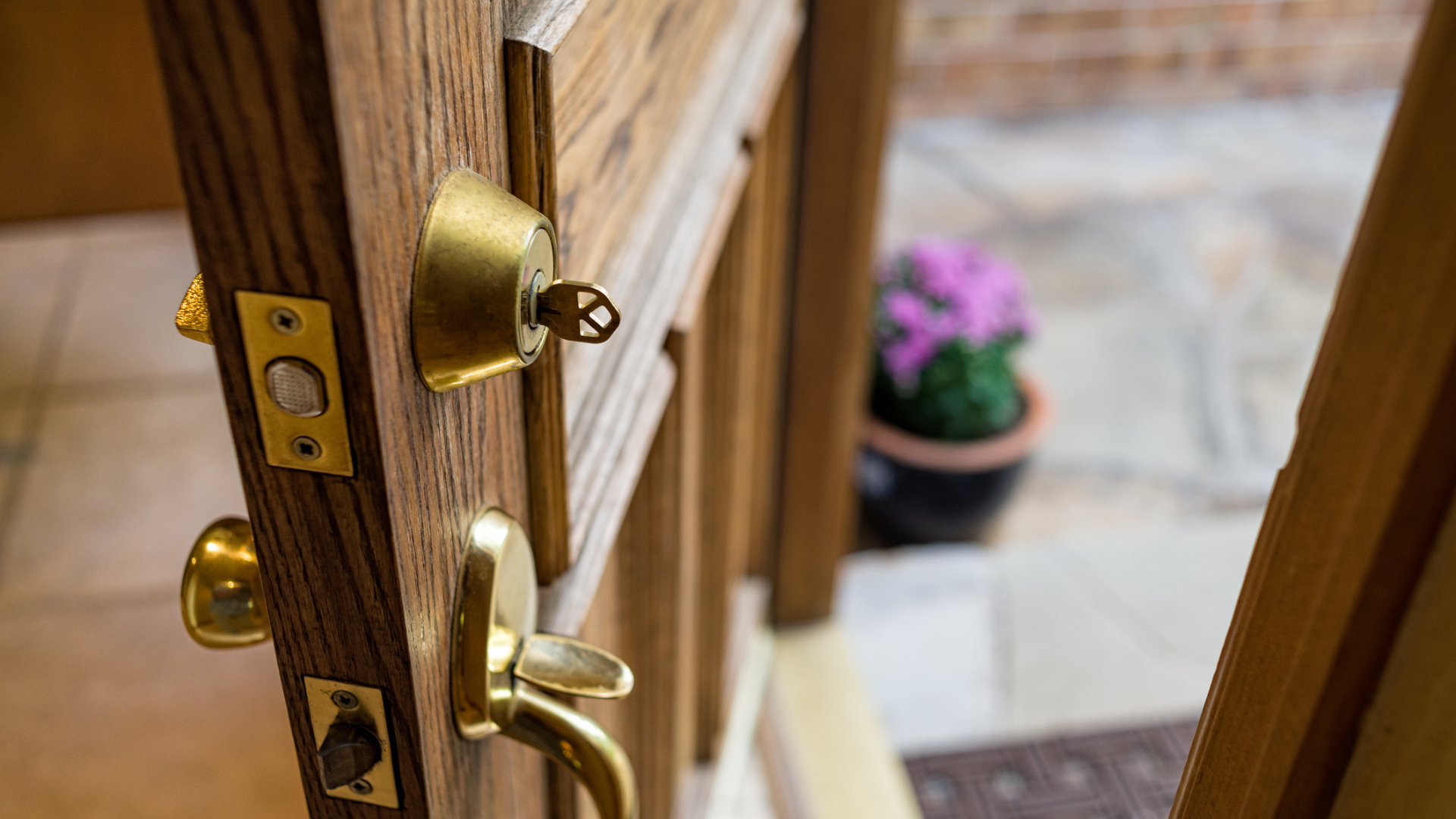5 ways to stop a creaky door using products you already have at home
And it's not WD-40!


With spooky season upon us, it's not a great time to have creaky doors in your home. Scratch that - there's actually never a good time to have creaky doors in your home. It's extremely irritating and usually indicates that the door isn't level, putting undue weight on the hinges. It's important not to ignore these symptoms, especially if you don't fancy digging your toolbox out and replacing your door frame. Doesn't sound fun, does it?
If you are experiencing an annoying squeak from one or more doors in your home, reaching for the WD-40 is usually the first step. It's an oil that has earned its reputation as a jack of all trades, from making wheels roll faster to enhancing gear functionality. There's no denying that WD-40 is great, especially as it has lubrication and anti-corrosion properties and doubles up as a solvent and degreaser in one. However there are many other products you can use to silence a creaky door, that work just as well and most you may have around the house already.
Before you find out more, check out the 10 essentials every homeowner should have in their toolbox. You may be missing something!
1. Olive oil
Olive oil is a straightforward way to silence squeaky hinges. Just add a few drops of olive oil to lubricate the noisy hinges. To keep things neat and easy, it's recommended to use a pipette or an oil can. It'll stop it going all over the floor and yourself! Apply the oil to the hinges, and you'll soon enjoy a hinge that doesn't squeak anymore.
2. Vaseline
Vaseline (petroleum jelly) has found various uses over the years, including medical applications to minimise scarring and as an ingredient in hair products to prevent moisture loss.Thanks to its oily properties, petroleum jelly is also an excellent option for lubricating door hinges, potentially solving your squeaky hinge problem. To apply petroleum jelly to quieten your hinges, simply rub a small amount on the outer surface until it seeps into the hinge. For a more thorough approach, consider removing the hinge pin, coating it with petroleum jelly and then reinserting it into the hinge.
3. Bar of soap
Bar soaps are packed with fats and oils, like palm and coconut, which can effectively lubricate those annoying squeaky hinges. To use soap to silence your hinges, simply rub a bar of soap onto them until they're well-lubricated. Then, open and close the door a few times to distribute the soap evenly. Opt for a bar soap with a higher fat content or organic soaps are a reliable choice for this purpose. Once you have done this, use a damp cloth to remove any access soap.
4. Washing up liquid
Did you know your trusty household cleaner, washing up liquid can come in use when fixing a squeaky door? Simply apply a small amount of washing-up liquid to the squeaky hinge, making sure to cover it well. Then, give the door a few swings back and forth to help work the liquid into the hinge. This makeshift lubricant will reduce friction and put an end to that irritating squeak.
Get all the latest news, reviews, deals and buying guides on gorgeous tech, home and active products from the T3 experts
5. Fix the hinge!
In some cases, the reason that your door is squeaking may be because the hinge is broken and needs replacing. If your door, gate or cupboard is still in good condition, then replacing a hinge is easy. The first thing to do when replacing a door hinge is to identify what door hinge you have. The most common door hinge is a butt hinge, but there are other types of door hinges that are used throughout the home, for example, the same hinge that is on a gate isn’t usually used on a cupboard.
G Johns, a specialist in Ironmongeries, have created a guide on how you can identify which door hinge you’re working with:
Butt Hinge: designed for use on internal or external doors as well as cupboards and windows.
Concealed Door Hinge: used to create a hidden or “Jib” style door.
Fire Butt Hinge: required for installation on fire rated doors in residential and commercial properties.
T Hinge: commonly used to hang gates.
Pivot Door Hinge: fitted to the top and bottom of the door, the pivot hinge allows the door to swing in two directions. The pivot hinges are also ideal for tall and wide doors.
Rising Butt Hinge: allows the door to rise up as the door opens, ideal for clearing uneven floors.
Spring Loaded Hinge: self closing hinges, these will help close the door after it’s been opened.
Thrust Bearing Hinge: for heavy and frequently used doors, these hinges are vastly superior to washed and ball bearing hinges.
Parliament Hinge: allows the door to project past an obstruction such as an architrave or skirting board. Ideal if you would like your doors to fold back against a wall. Commonly used on double doors.

Lizzie is T3's Home Living Staff Writer, covering the latest in smart home, lifestyle and beauty tech. From skincare gadgets to vacuum cleaners, she's your go-to for trends and top recommendations.
When not writing, Lizzie enjoys mooching around Bath, spending time with loved ones, or testing her review units – often during an enthusiastic cleaning spree!